Fly Me to the Moon
No. 166
When I stepped outside Friday morning, Jupiter was high in the southern sky, right between the eyes of Taurus as Southwest 2741 marked its path below on the early run from Houston to Las Vegas. The Moon was exceptionally bright and blue, just a day into waning, and the light as it dropped in the West made the contrails of the 737 stand out with exceptional relief. A vapor trail laced with CO2, nitrogen oxides, carbon monoxide, sulfur oxides, unburned hydrocarbons, and traces of heavy metals, written out by a hundred-ton machine 36,000 feet above. The Moon was 224,000 miles away, and Jupiter 413 million miles, but something in the vivid dimensionality of the tableau made them all seem close.
The blue was dialed up in part because of the cooler temps that had descended during the week, northern air that pushed down through the middle of the continent and delivered relief from the feeling that summer would never really end. Cold air clears the skies, and clear skies make cool nights colder.
I flew into Iowa for a meeting and a reading as the Canadian front blew across the border, and it was colder there, freezing both nights. On the plane up, I read the story buried at the back of the front section of the NYT about the World Wildlife Fund’s latest Living Planet Report on the biodiversity crisis, estimating based on monitored populations that the vertebrate wildlife population of the planet has dropped by 73% since 1970. As I read more of the coverage, I was struck by how much emphasis all the reports gave to skepticism by other scientists about the precision of the study’s methodology, rather than highlighting what would be the more conservative estimates of what’s going on out there, numbers that even the skeptics seemed to all acknowledge would still be dire.
I was pretty busy on the trip, but was able to get out for a run both days in Des Moines. The first day I ran over the river and up the hill to the Capitol, seeing monuments to Civil War and statehood that I had last seen as a kid on grade school field trips without realizing how weird they were—bronze figures of a deified Lincoln petting his son, and a goddess version of a farm mom feeding the world with her own milk. The second day, I decided to go somewhere I had never been, despite having grown up in the town and spent a few years working there as an adult: the confluence of the Des Moines and Raccoon Rivers that was the reason the place was chosen as a townsite in the middle of the new settler territory.
The Des Moines River, a major tributary of the Mississippi, is heavily engineered, the wide stretch that flows through downtown tamed with concrete banks. There’s a paved trail along both sides, elaborately navigating around the massive floodgates. There’s also a lower, older trail, right at the water, narrow and with no railing, perhaps intended mainly for workers tending to the infrastructure of riparian control. When I saw the stairs down to that, I took them.
The urbanity disappeared quickly, even though it was all around. There were shoals visible in the river, and rapids. Inland gulls flying, and a septet of turkey vultures on the opposite bank, the gold dome of the Capitol visible behind them. The river was leaving downtown, through the Southeast Bottoms, the floodplain around the confluence that has always been a half-abandoned zone. There’s a ball park there, where the farm team for the Chicago Cubs plays, but you can’t see it from that riparian sidewalk at the edge. You could only see the signs of recent campfires overnighters had built on the path, and a dude fishing in the rapids as his companion watched from the higher deck.
There was a big construction project underway where the rivers meet, but I was able to navigate around it, by getting off the pavement and onto the improvised trails along the Raccoon. And then, after a scramble over some flood control riprap, down onto the natural banks, which were just dry enough to traverse without punching through. A mix of human and animal tracks, no sign of coyotes, and one mysterious gopher trail.
Further up, where more bottom land separates the Raccoon from downtown, things got a little wilder, even though—maybe because—surrounded by industrial land uses on both sides. Huge flocks of inland gulls, ducks, geese. And elaborate, hardy tent camps in the shade of tall cottonwoods, which are considered invasive up there. What I thought was another vulture took off as I walked up, revealing the broad wings and black and white Jackson Pollock coloration of a juvenile bald eagle before it disappeared behind the treeline, only to reappear later perched on a dead branch.
After I got to the oxbow lake that has been made into a municipal park and turned around, I was struck by how the untamed channel of that tributary river, which also provides much of the city’s drinking water, compelled the maintenance of space for urban biodiversity. You could really see it as you headed back from the west, the expanses of tallgrass Tarkovsky-scape growing in the floodplain between the skyscrapers and the water. Even though the site on the opposite bank was just declared a Superfund site, where decades of dumping industrial solvents have contaminated the land with Trichloroethylene, threatening a river that already struggles with other sources of pollution.
Behind the ballpark at the confluence, they have a little log cabin, memorial to the first military installation built on that site. The fort was built by dragoons at winter’s end in 1843, to administer the transition after the Sauk and Meskwaki who had fiercely resisted the first settlers that crossed the Mississippi were finally compelled to sell their lands in the state and work their way west. They migrated up the Des Moines to the confluence of the Raccoon, where they were allowed to loiter for three years before they were required to move to reservations and make room for what was coming.
The biodiversity story is more complicated in some ways than the statistical averages suggest. The North American raptors like the ones I saw on that run are among the species that seem to have recovered significantly since I was a kid, thanks to the conservation efforts that followed the awakening ignited by Rachel Carson’s Silent Spring, evidencing how resilient wild nature can be with just a little effort on our part to be attentive to the conditions we create for other life. The Living Planet Report focuses on changes since 1970, estimating the North American average population decline to be as high as 39%. Imagine what the numbers would be like if we had data to measure it since 1770. Or 1470.
In places like Iowa, where much of the legacy agricultural land uses seem economically and ecological exhausted, especially in the southern half of the state where the topography is not as ideal, you can see the rewilding starting to happen on its own. And get a glimpse of what could be possible if we worked harder to help it.
Upriver from the stretch I ran on Wednesday, Microsoft has turned fallow cornfields at the edge of town into the sites of big data centers that use the region’s abundant but polluted water, wind energy infrastructure and centralized location to power the cloud. The one pictured above, right off I-35 as it leaves West Des Moines, is said to be where they incubated the artificial intelligence known as ChatGPT. Imagine trying to explain what’s in there to a time traveler from 1843, or even 1973.
Our dark pop-fictional visions of the coming robot takeover have always tended to envision a landscape even more brutalized than the one we made of this continent, in part because we always used to assume the computers would unleash, or be the instruments of, global nuclear war. If the real world Skynet that’s coming online now acquired enough data, power and machine intelligence to really take over, I’ve found myself thinking it wouldn’t raze the planet, but rewild it. But ChatGPT and its cousins are as hard-wired as servants of capital as were the cornfields their data centers replaced, with a hunger for energy so profound the big tech behemoths are racing to rejuvenate nuclear power to support it. Bringing back the balance that will preserve an ecologically viable future, if it’s not already too late to save the century that’s coming, is on us.
Lots of Lots
Thanks to the folks who came out to Beaverdale Books to talk about A Natural History of Empty Lots Wednesday night. The store now has some signed stock, and an amazing collection of other works on nature, so stop by if you’re in the area—it’s an amazing shop.
If you’re in New York, my conversation with Mark Hurst for WFMU’s Techtonic will air Monday evening from 6-7 pm ET, over the air and on a livestream. Also tomorrow, I’ll be talking live over the air in Sonoma on the KSVY-91.3 Morning Show from 8-10 PT.
Tuesday evening at 5:30 in Austin, I’ll be at Barton Springs for the S.O.S. Alliance’s Barton Springs University event.
The afternoon of Wednesday, November 6, I’ll be joining author Malka Older and futurists Jake Dunagan of the Institute for the Future and Scott Smith of Changeist for a “Breaking Futures” post-election breakdown.
Next month, I’ll be at the Texas Book Festival in Austin Nov. 15-17, then in Seattle at Elliott Bay on Nov. 21, and at Powell’s in Portland (where Empty Lots is a Powell’s Pick) on Nov. 22.
In other news, Jeff VanderMeer has an excellent new piece about our damaged relationship with the land up in the Globe and Mail (including a quote from Empty Lots). Jeff’s new novel, Absolution, hits the stands Tuesday.
On the subject of the settlement of North America, my palate-cleansing reading of the past couple of weeks has been Keneva Kunz’s excellent newer translation of The Vinland Sagas for Penguin Classics. And I just started reading Debbie Urbanski’s fascinating post-AI rewilded Earth novel After World.
Lastly, if you ever wondered who owns the Moon, or who might claim to, here’s a gateway to the weird world of extraterrestrial real estate law, that also reveals a lot about how we got to where we are on this celestial body.
Have a great week.





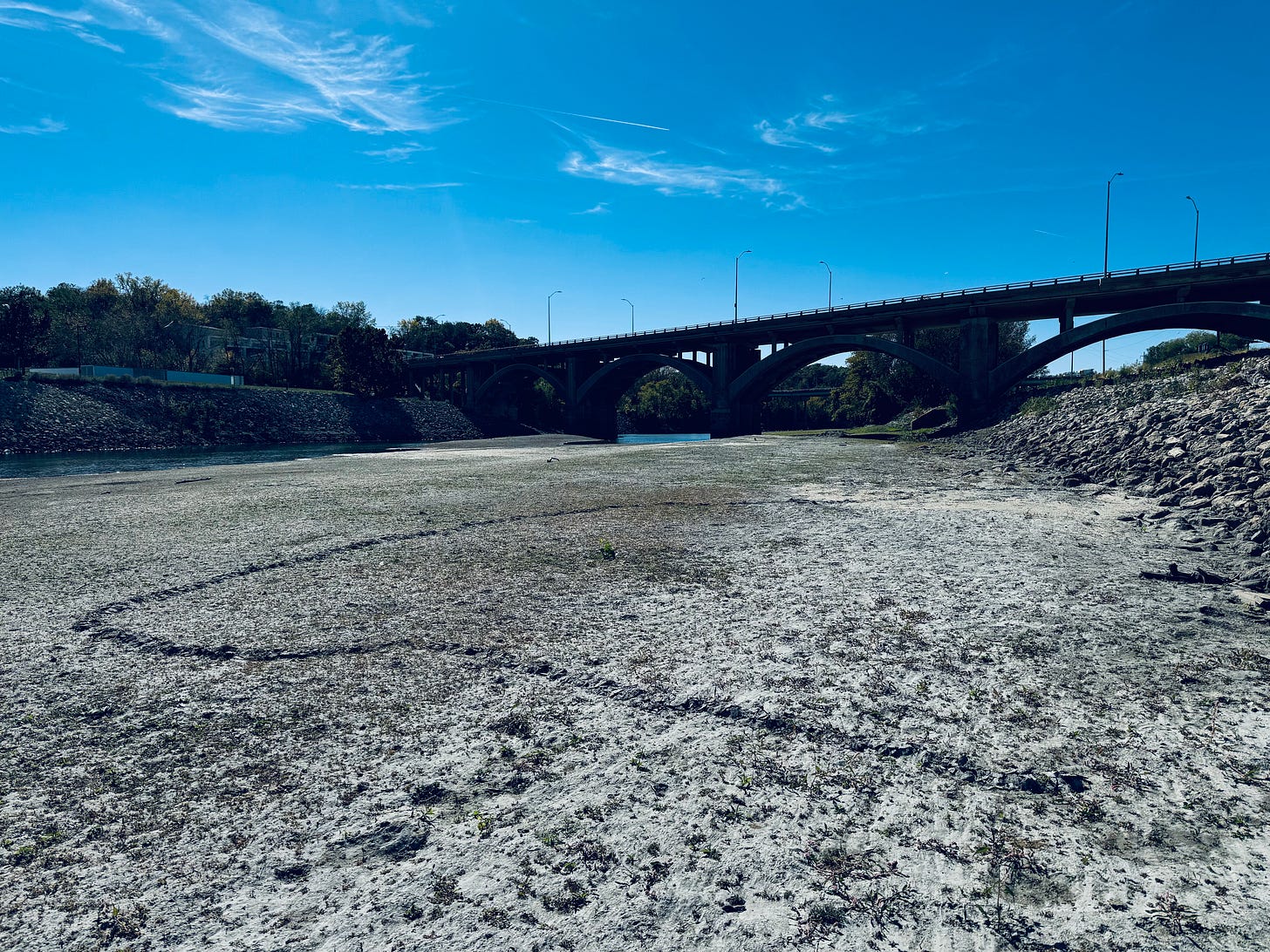

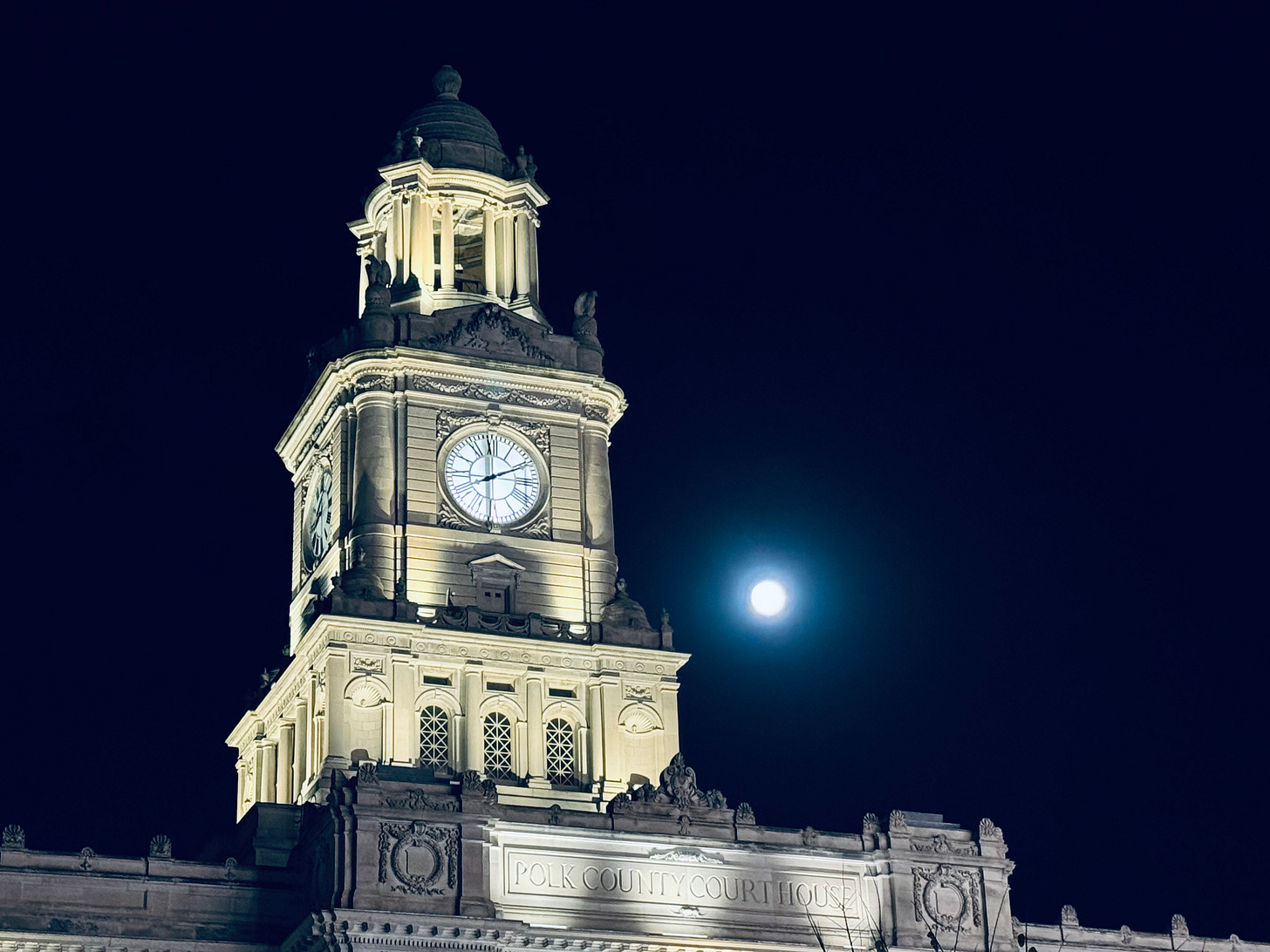
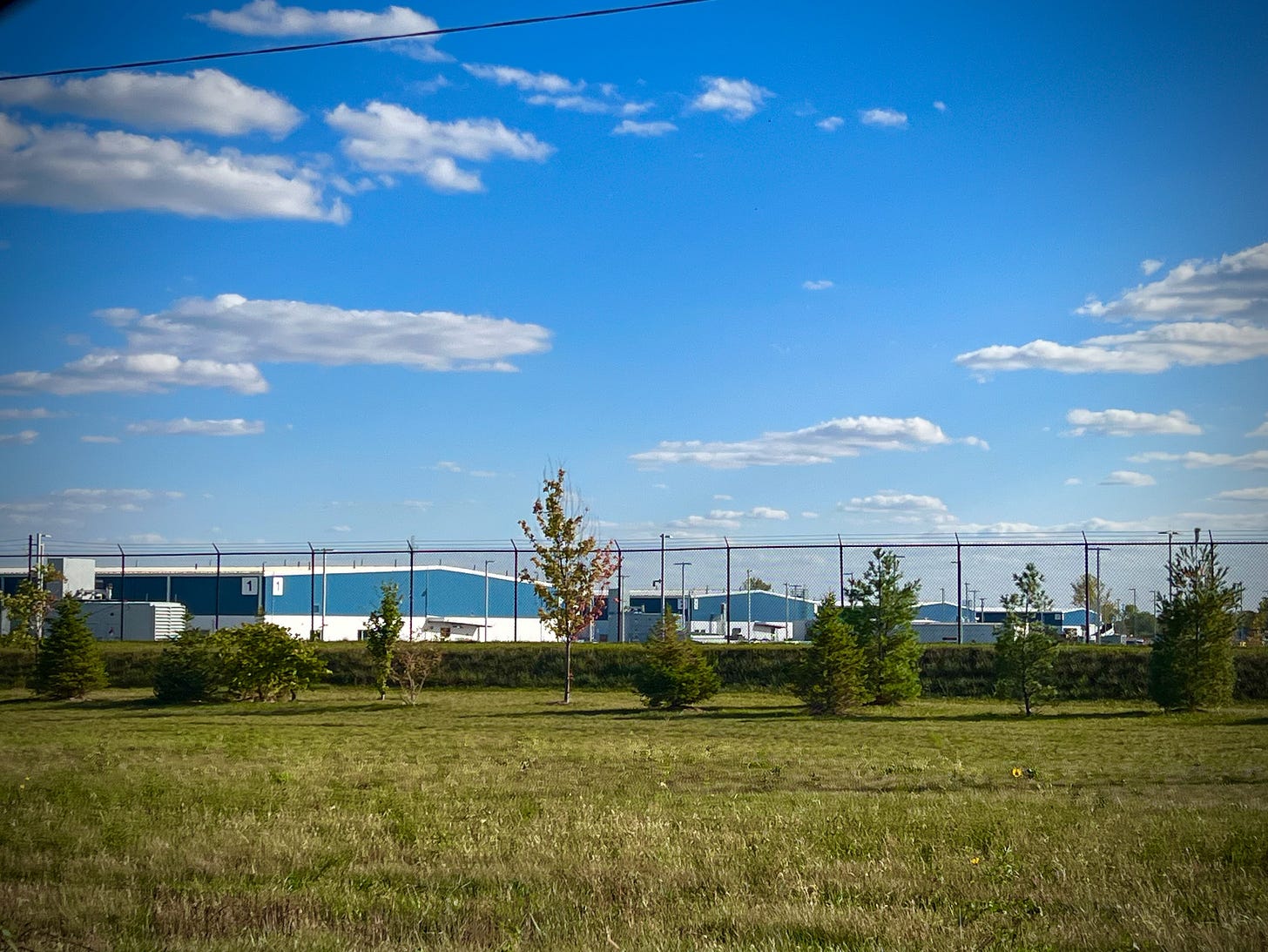

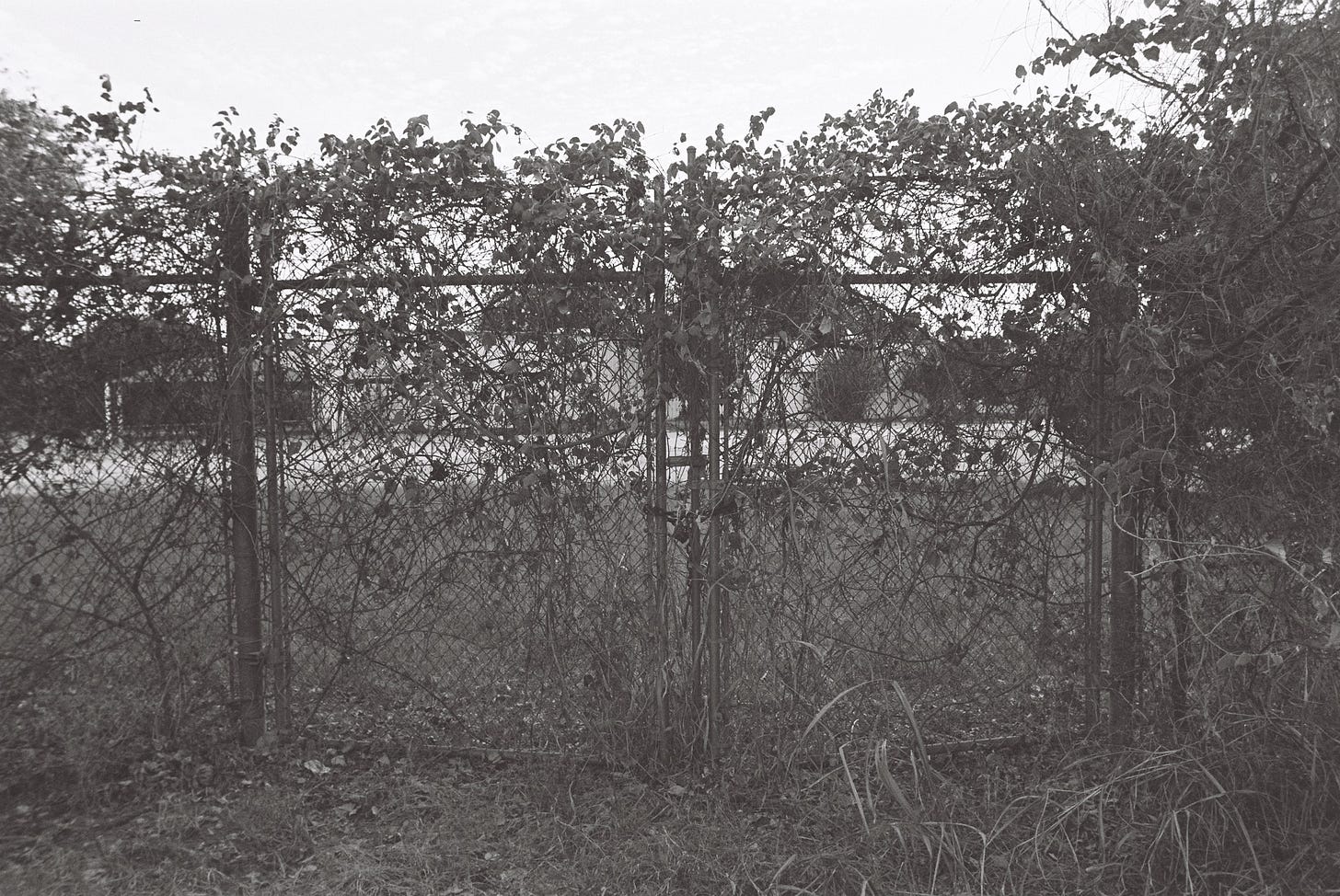
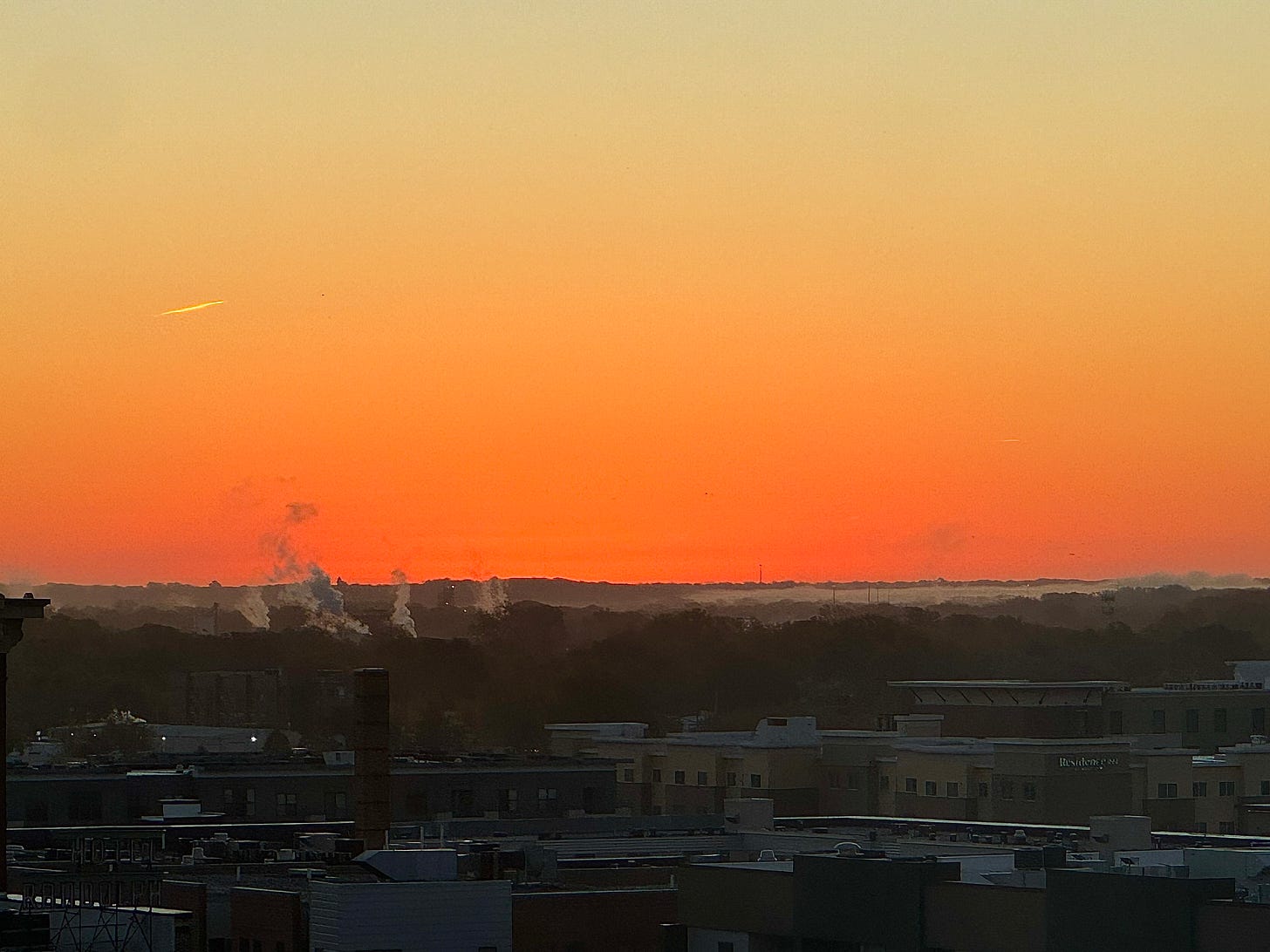
Speaking of re-wilding, of a curious sort, yesterday I visited a Superfund site in Texas City, Texas and came across a coyote scat (or was it a ghost wolf?) at one of its chainlink fence gates. The Motco site was one of the most notorious of the 1980s, they cleaned out what they could over the last decades, and capped, or contained with slurry walls, that which remained. It, and a couple of nearby similar sites, are covered with grasslands now, restricted from development, but traversable up top, if an animal or bird can get through the portal of the gate, or over or around the fence. Rerouting of highways and ramps to I-45, to serve a new LNG facility, have been routed around the site, so as not to disturb it. It’s a tragedy that site is there, and its open space is dwarfed by the vast petrochemical complexes that extend up the coast to Houston, Baytown, Beaumont, and southern Louisiana, but it was a small hopeful sign to see that the animals were still there and had found it.
Congratulations on your book tour. Sounds as if you are welcome in lots of places to talk about the book. Just wanted to note, I think that in this essay you meant "palate-cleansing" rather than "pallet-cleansing." Unless, of course, you meant that you were cleansing "a portable platform for handling, storing, or moving materials and packages (as in warehouses, factories, or vehicles)." : )
I look forward to reading your book. I enjoy reading about your urban wildlife adventures, hither and yon.